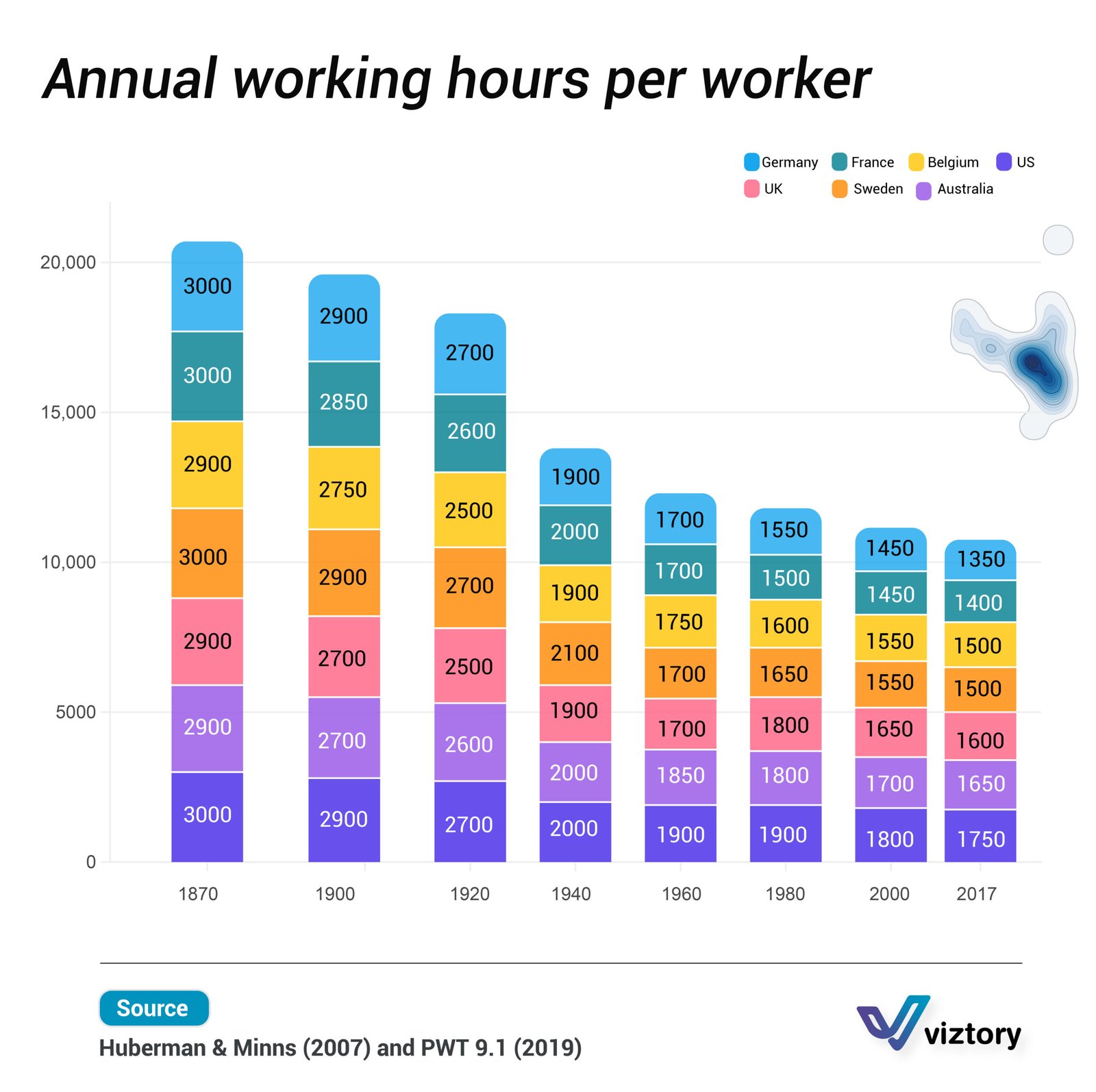The Decline in Annual Working Hours and Its Impact on Healthcare
-
Sep, Thu, 2024
The Decline in Annual Working Hours and Its Impact on Healthcare
The relationship between work and health has long been a focal point for public health professionals, economists, and policymakers. The provided image illustrates the decline in annual working hours per worker across several countries from 1870 to 2017. Countries such as Germany, France, Belgium, the United States, the United Kingdom, Sweden, and Australia have seen a steady reduction in the number of hours people spend working each year. This trend reflects broader societal changes, including advancements in labor rights, industrialization, and work-life balance, which have direct implications for both mental and physical health.
Work and Health: A Complex Relationship
Over the past century, numerous studies have linked long working hours to various adverse health effects. Individuals who work excessive hours are at a higher risk for heart disease, high blood pressure, and mental health issues such as anxiety and depression. Historically, the high working hours seen in 1870, where workers in Germany and the US logged around 3,000 hours annually, contributed to both physical exhaustion and mental strain. At that time, healthcare systems had limited resources to address these work-related health issues, and workplace safety regulations were minimal.
As the data shows, by 2017, annual working hours per worker have significantly reduced to around 1,350 to 1,600 in most countries, with a corresponding improvement in worker rights, job conditions, and healthcare access. This decrease in working hours can be attributed to various factors such as technological advancements, automation, better labor policies, and a societal shift towards valuing work-life balance. These changes have not only improved the quality of life but also reduced the health risks associated with long working hours.
The Role of Reduced Working Hours in Preventive Healthcare
The reduction in working hours has had a profound impact on preventive healthcare. With fewer hours spent at work, individuals have more time to engage in physical activities, spend time with family, and pursue hobbies—all of which contribute to improved mental health. This shift towards shorter work hours has allowed people to focus more on their well-being, participate in regular exercise, and adopt healthier lifestyles. Moreover, shorter workdays often mean less stress, better sleep, and reduced burnout—all crucial factors in preventing chronic diseases such as cardiovascular conditions, diabetes, and mental health disorders.
In countries where annual working hours are still relatively high compared to others, such as the United States and the UK, healthcare professionals continue to emphasize the need for better work-life balance. Public health campaigns increasingly focus on the benefits of reducing work-related stress through policies that encourage flexibility, vacation time, and mental health support.
Healthcare Challenges in Modern Work Environments
While the reduction in working hours has led to improvements in overall public health, modern work environments introduce new challenges that healthcare systems must address. For instance, the rise of the digital age has blurred the lines between work and personal life. Remote work and digital connectivity mean that, even though workers may officially have shorter working hours, they are often available and working outside of these hours. This can lead to a resurgence of stress-related health issues, even in societies that have reduced official work hours.
Healthcare systems in wealthier countries must now adapt to these new challenges by providing resources and support for mental health, promoting healthy work habits, and addressing the physical strain caused by prolonged use of digital devices. Governments and healthcare providers should continue to advocate for maintaining healthy boundaries between work and personal life to mitigate these emerging risks.
Conclusion
The steady decline in annual working hours from the late 19th century to the present day has played a crucial role in improving public health. Workers today enjoy greater work-life balance, reduced stress, and improved physical and mental well-being compared to their counterparts in the late 19th and early 20th centuries. However, as work patterns continue to evolve with the rise of digital technologies, healthcare systems must remain vigilant and adapt to the new challenges posed by remote work, digital overload, and blurred boundaries between work and personal life.
By continuing to prioritize health in the workplace and promoting policies that support work-life balance, societies can ensure that the gains made in reducing working hours translate into lasting health benefits for all workers.

